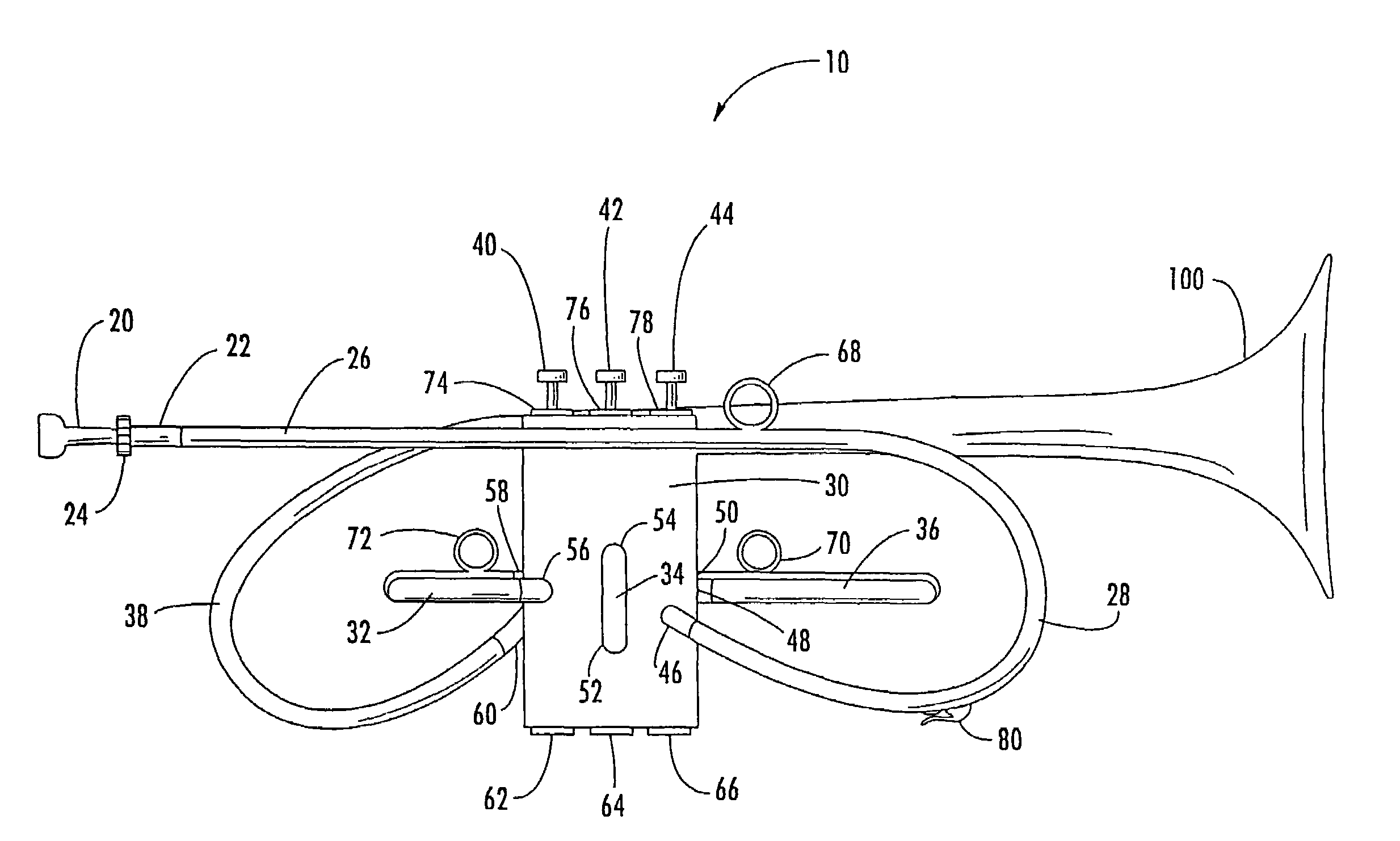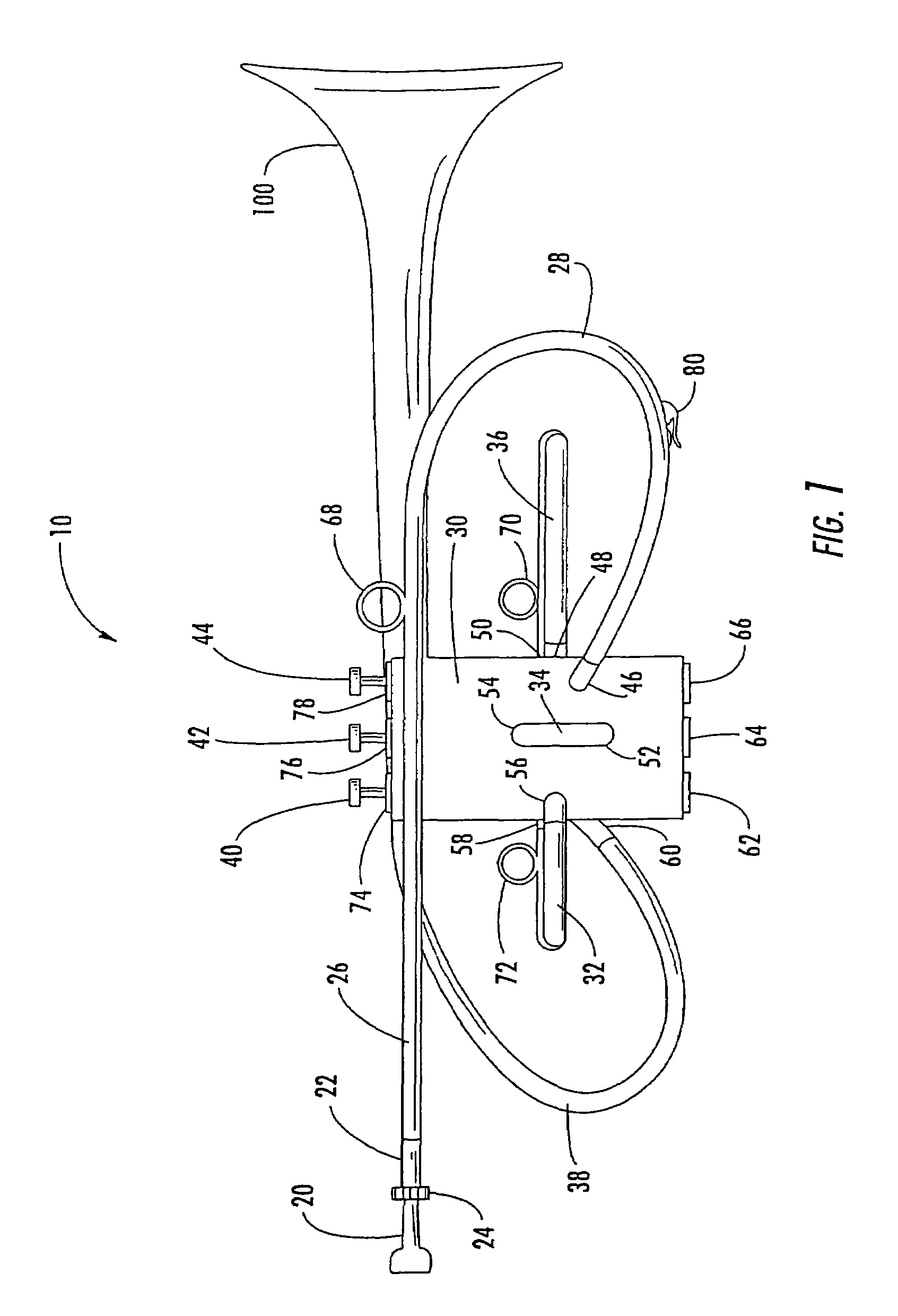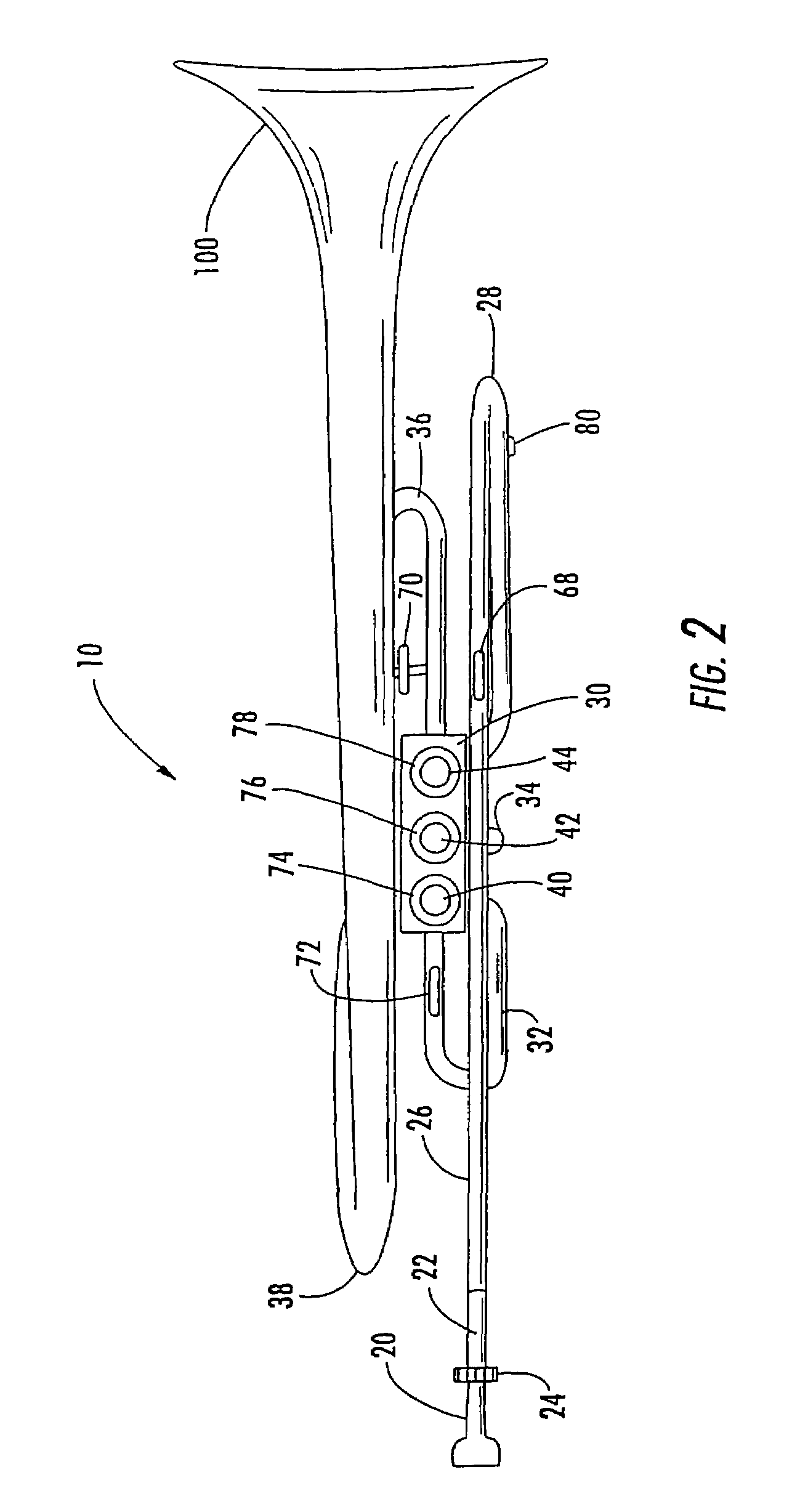Brass-wind instrument valve and method
a technology for brasswind instruments and valves, applied in wind instruments, instruments, musical instruments, etc., can solve the problems of affecting the performance of brasswind instruments, and affecting the sound quality of brasswind instruments, so as to improve the acoustic characteristics of brasswind instruments, and reduce the effect of sharp bends
- Summary
- Abstract
- Description
- Claims
- Application Information
AI Technical Summary
Benefits of technology
Problems solved by technology
Method used
Image
Examples
Embodiment Construction
[0034]Referring now to FIGS. 1 and 2, a brass-wind apparatus comprising a monobody valve block according to the present invention is illustrated and generally referred to by the reference number 10.
[0035]The brass-wind instrument 10 generally includes a mouthpiece 20, a mouthpiece receiver 22, a lead-pipe 26, an entrance tube 28, monobody valve block 30, valves 40, 42, 44, a first-slide 32, a second-slide 34, a third-slide, 36 an exit tube, 38 and a bell 100.
[0036]Sound comprising a column of air is made at the mouthpiece 20 that is complementarily received in a mouthpiece receiver 22. The mouthpiece 20 preferably comprises a negative conical internal shape and is received in the mouthpiece receiver 22. The mouthpiece receiver 22 further comprises a friction means 24 to removably retain and adjust the mouthpiece 20 therein. The mouthpiece 20 may be adjusted to fine tune the instrument 10. The column of air is pushed from the mouthpiece 20 into the lead-pipe 26 and then into the entr...
PUM
 Login to View More
Login to View More Abstract
Description
Claims
Application Information
 Login to View More
Login to View More - R&D
- Intellectual Property
- Life Sciences
- Materials
- Tech Scout
- Unparalleled Data Quality
- Higher Quality Content
- 60% Fewer Hallucinations
Browse by: Latest US Patents, China's latest patents, Technical Efficacy Thesaurus, Application Domain, Technology Topic, Popular Technical Reports.
© 2025 PatSnap. All rights reserved.Legal|Privacy policy|Modern Slavery Act Transparency Statement|Sitemap|About US| Contact US: help@patsnap.com



